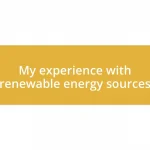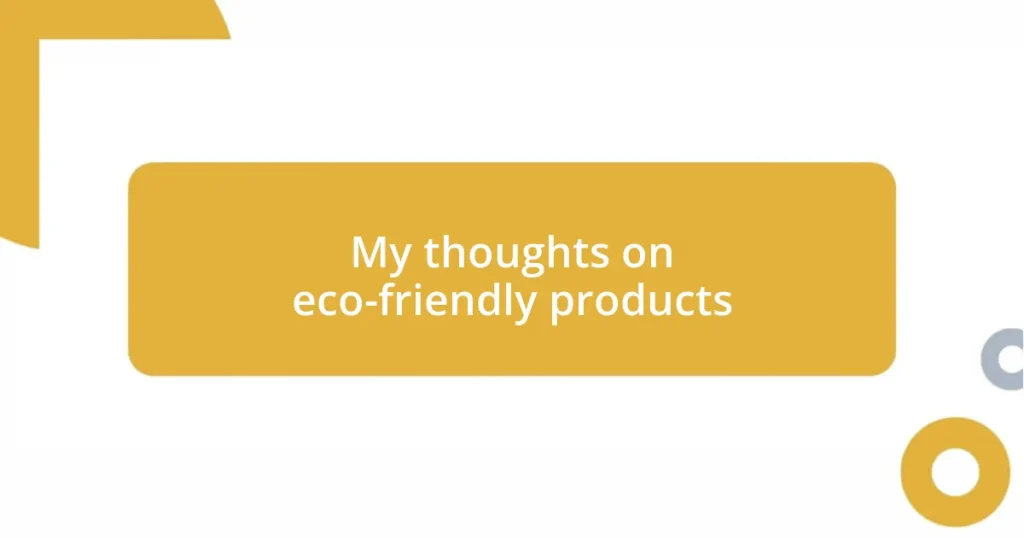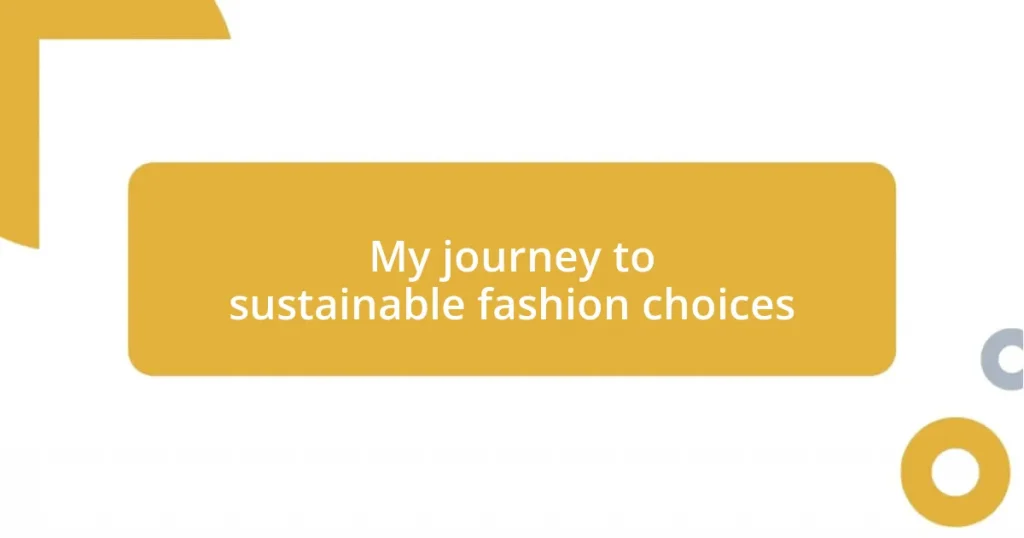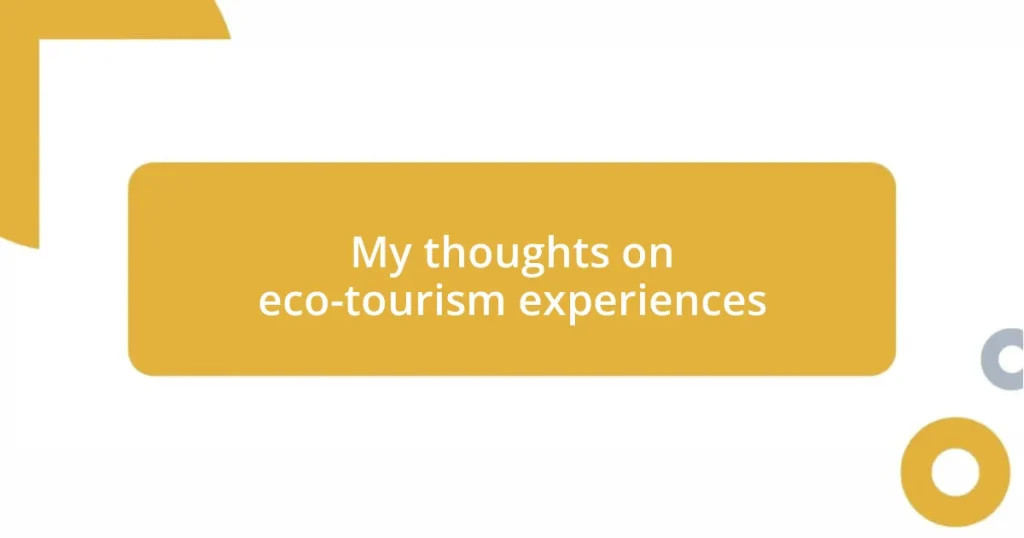Key takeaways:
- Eco-friendly products are designed to minimize environmental impact, utilizing sustainable materials and production processes.
- Using eco-friendly products promotes healthier living spaces and supports ethical business practices, enhancing personal fulfillment and empowerment.
- Key features of eco-friendly products include biodegradable materials, energy efficiency, and transparent labeling for informed consumer choices.
- Identifying eco-friendly products can be simplified by looking for certifications and scrutinizing ingredient lists, along with assessing brands’ sustainability commitments.
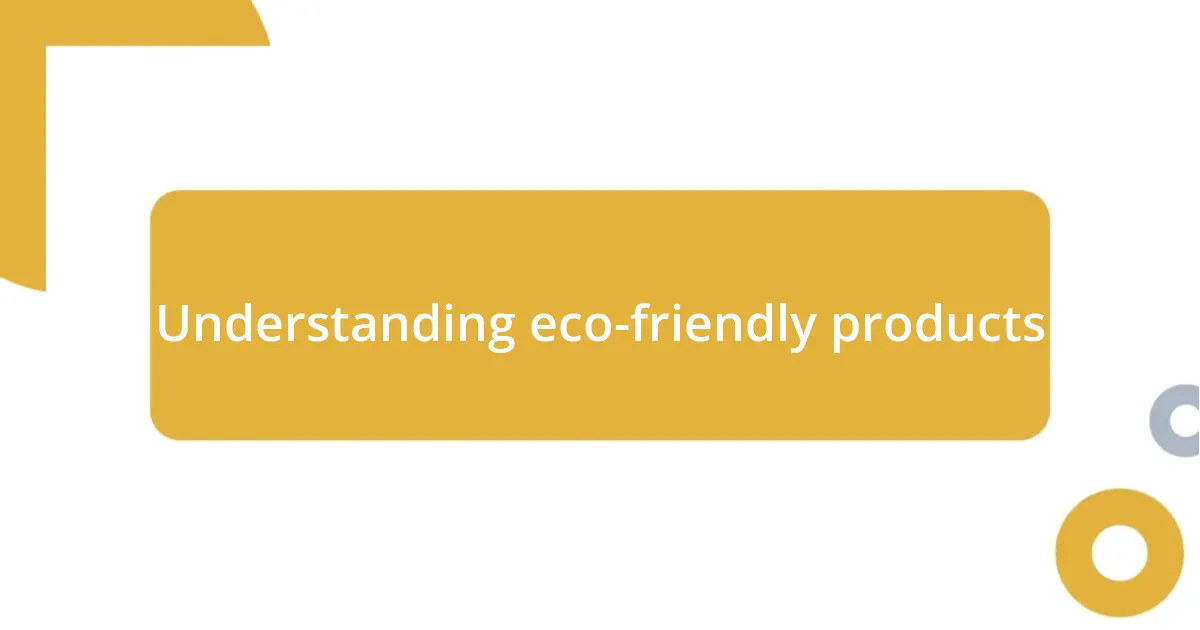
Understanding eco-friendly products
When I first started exploring eco-friendly products, I remember feeling overwhelmed by all the options out there. I’d pick up a product and wonder, is this really making a difference? Understanding that eco-friendly products are designed to minimize environmental impact is key; they often use sustainable materials and production processes that help reduce pollution and waste.
One thing that struck me during my research was how personal and connected the concept of eco-friendliness can be. Choosing eco-friendly products feels like a small victory in my daily life. Like when I switched to a biodegradable toothbrush – it made me feel like I was contributing to something greater, a collective effort to live more sustainably. Have you ever experienced that rush of knowing you’re making a conscious choice for the planet?
There’s something profound about embracing products that are kind to the environment. It often leads to a deeper reflection on our lifestyles. As I navigated this journey, I found myself questioning not just what I purchased, but how I consumed and disposed of everyday items. This mindset shift has turned shopping into a thoughtful exercise rather than a mere routine chore.
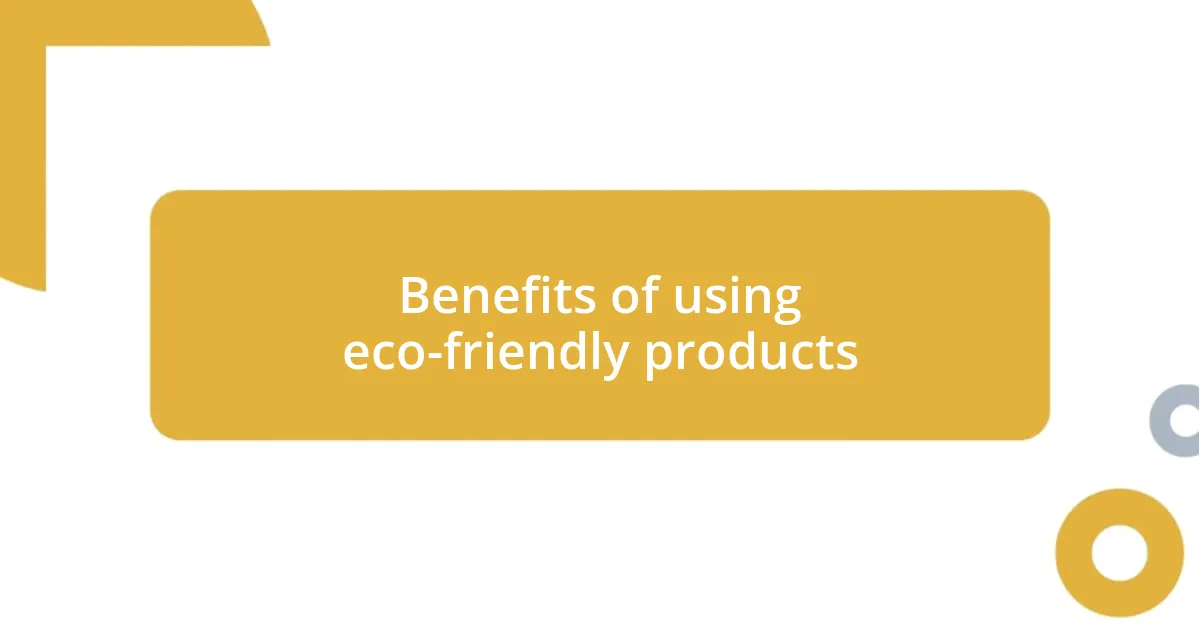
Benefits of using eco-friendly products
Using eco-friendly products brings a sense of fulfillment that’s hard to describe. I remember my first time purchasing a natural laundry detergent. The fresh scent was a far cry from the overpowering chemicals I was used to, and knowing it was safe for my family felt like a breath of fresh air. The benefits extend beyond just personal satisfaction; they ripple out into the environment, creating a healthier planet for future generations.
Here are some key benefits of using eco-friendly products:
- Reduced Environmental Impact: These products often use sustainable materials that minimize pollution and resource depletion.
- Healthier Living Spaces: Many eco-friendly items are free of harmful chemicals, promoting better air quality within our homes.
- Support for Ethical Practices: Choosing eco-friendly often means supporting companies committed to sustainable business practices.
- Enhanced Quality: Many times, I’ve found that eco-friendly products are crafted with care, resulting in higher quality and performance.
- Empowerment through Choices: Each purchase can feel empowering, knowing I’m playing a role in the larger movement towards sustainability.
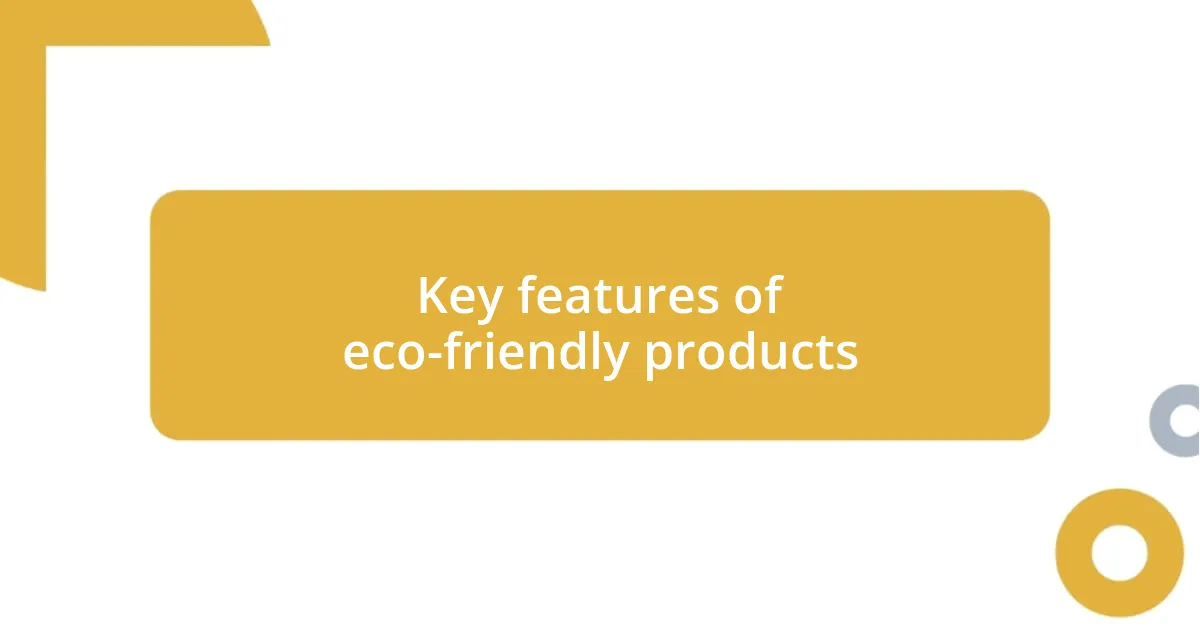
Key features of eco-friendly products
Eco-friendly products come with distinctive features that set them apart from conventional options. For instance, they often prioritize biodegradable materials, which means they break down naturally in the environment, reducing landfill waste. I once switched to a compostable phone case, and it felt liberating knowing that when it was time for a new one, I wouldn’t be contributing to plastic pollution.
Many eco-friendly products also focus on energy efficiency during their production and usage. I can vividly remember when I started using LED light bulbs instead of traditional incandescent ones. The reduction in energy consumption not only lowered my electricity bill but also sparked my commitment to being more conscious of how my choices affect the planet.
Moreover, these products frequently come with transparent labeling and ethical sourcing information—key features that foster trust and informed decisions. When I came across a skincare brand that openly shared its sustainable sourcing practices, I felt an emotional connection. It was reassuring to know that my purchase directly supported fair trade and environmental stewardship.
| Feature | Description |
|---|---|
| Biodegradable Materials | Breaks down naturally, reducing landfill impact |
| Energy Efficiency | Reduces energy consumption and costs |
| Transparent Labeling | Promotes informed consumer choices through clear sourcing info |
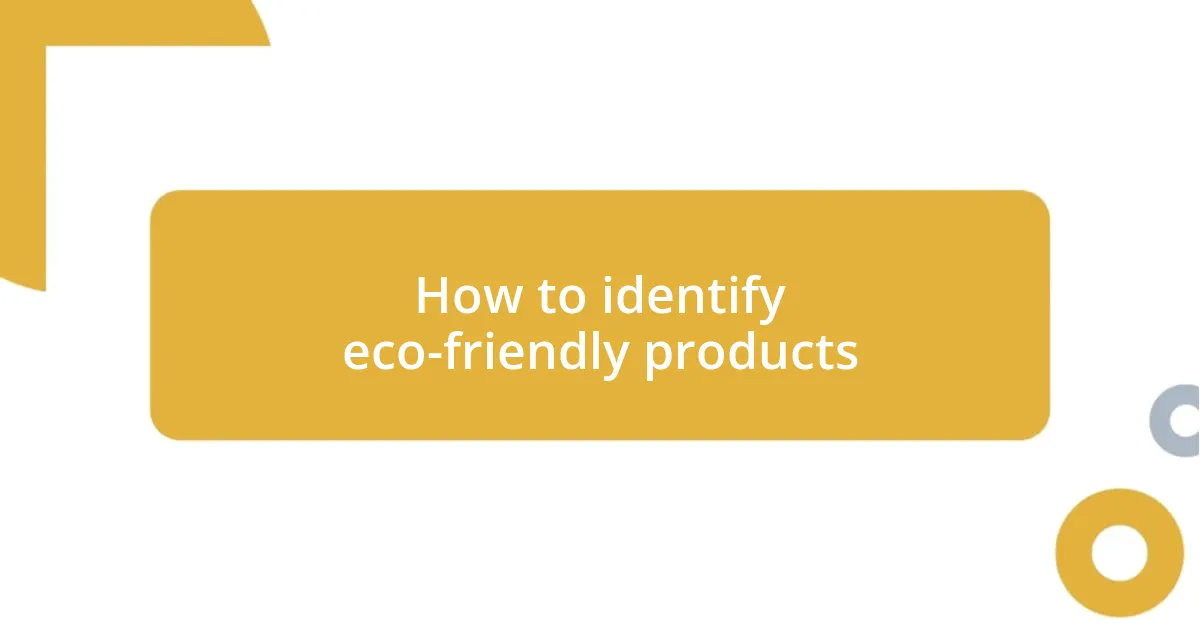
How to identify eco-friendly products
Identifying eco-friendly products can sometimes feel overwhelming, but it doesn’t have to be. One simple strategy is to look for certifications like the USDA Organic or Energy Star labels. The first time I noticed these labels was while browsing for cleaning supplies, and it felt like a mini victory to choose options that met stringent environmental standards.
Another effective way to identify eco-friendly items is by checking the ingredient list or materials used. I remember when I started scrutinizing labels on personal care products—it completely transformed my shopping routine. I was surprised to discover how many products contained hidden chemicals, and I felt a sense of responsibility to choose items made from natural or organic ingredients instead.
Finally, consider the brand’s overall commitment to sustainability. Are they transparent about their practices? I once switched to a brand that had a comprehensive sustainability report, and knowing they were dedicated to ethical sourcing truly resonated with me. It made me wonder—how can we expect meaningful change if we don’t actively seek out and support those brands that prioritize the environment?
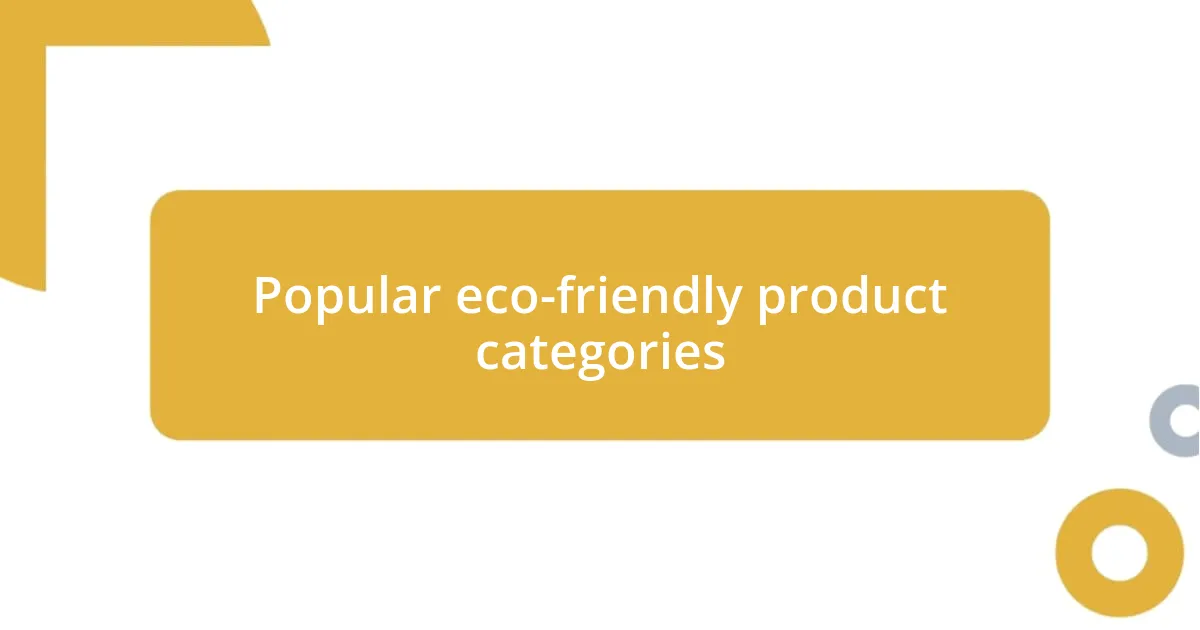
Popular eco-friendly product categories
When it comes to popular eco-friendly product categories, household cleaners are among the first that come to mind. I remember making the switch to plant-based cleaners after realizing just how many harsh chemicals were lurking in my cupboard. It felt good to know my home would be free of toxic residues, not just for my family but for the planet too. Plus, discovering the fresh scents from natural ingredients was a delightful bonus.
Another growing category is sustainable fashion, which really speaks to me. I was taken aback the first time I learned about the impact of fast fashion on the environment. Now, every time I shop for clothing, I prioritize brands that utilize organic materials and ethical manufacturing processes. It’s more than just a shopping trip; it’s a stand for something bigger. Have you ever considered how many hands were involved in making your favorite shirt? Knowing the answer often influences my buying decisions.
Health and beauty products also deserve a spot on this list. Switching to a zero-waste shampoo bar was an eye-opener for me. Not only did it transform my hair care routine, but it also made me feel like I was contributing to a less wasteful world. Whenever I share my experience with friends, I ask them—why not choose products that are good for us and the planet? The response is often a mix of curiosity and inspiration, which is exactly what we need to keep this conversation going.






